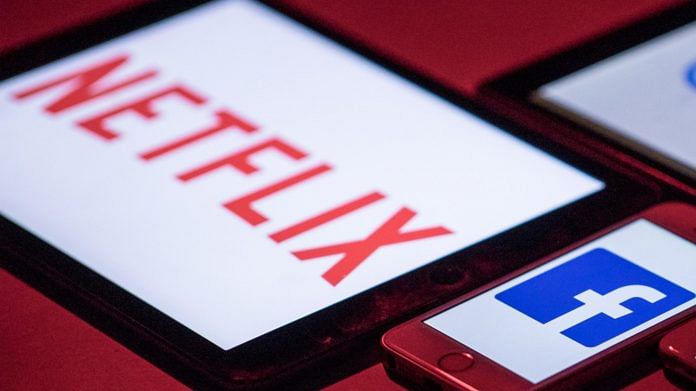New Delhi: “This is a government takeover of journalism and free speech in India,” said ThePrint’s Editor-in-Chief Shekhar Gupta while discussing the central government’s new rules for digital media in episode 693 of ‘Cut the Clutter’ Monday.
These rules, known as Information Technology (Intermediary Guidelines and Digital Media Ethics Code) Rules, 2021, pertain to OTT platforms like Netflix and Amazon, social media platforms like Facebook, Twitter and WhatsApp as well as digital news media organisations like ThePrint.
Citing an editorial in The Hindu titled “A wolf in watchdog’s clothing: On government’s move to regulate digital media”, Gupta explained that the guidelines are predatorial and call for a regulatory system that will cause “nudge and wink” at all levels and require more expenses and labour on the part of the platforms.
Also, the rules were formulated in secret just “as demonetisation or, as say, the appointment of Yogi Adityanath as chief minister of Uttar Pradesh”, he added.
However, Gupta agreed with the need to regularise the media industry. “All digital media platforms now have to register with the government which is a very good idea because anybody can set up a website nowadays and claim to be a news media organisation,” Gupta added.
‘Cumbersome’ three-tier regulatory structure
The new IT rules envision a “cumbersome” three-tier regulatory system with government employees at the top, explained Gupta. In the first tier, platforms must appoint an internal compliance officer who decides whether a complaint against content published by the platform is to be upheld, in which case the platform may be asked to withdraw the story or publish an apology or correction.
Gupta argued that the press already self-regulates based on “mature understanding” that government presence could have a chilling effect on free speech and conversation. Media is already bound by the Press Council of India’s code of ethics, while cable TV and other networks follow a programming code, he added.
The second tier consists of associations set up by the platform to form an oversight body. The complainant may approach such a body should they be dissatisfied with the way their complaint was handled at the first level, explained Gupta, adding that this is an unnecessary complication.
The final tier is meant to be an inter-ministerial committee consisting of secretaries in the central government which can take down content that somebody is complaining about or shut down a website altogether for some time. “So these are very strong, arbitrary powers,” observed Gupta.
He pointed out that two weeks ago, PM Modi had asked why everything should everything be left to IAS officers, on the floor of the Parliament, yet his government is now “handing over the final say” on what is published on digital media to IAS officers.
“What kind of autonomy… or impartiality do you expect from them?” said Gupta, adding that the Information and Broadcasting Ministry didn’t have the power to “shut down any publication at a whim” even during Emergency.
Also read: Behind Australia’s conflict with Facebook & Google — an uneven playing field
New IT rules affect end-to-end encryption
Gupta echoed concerns raised by organisations like Human Rights Watch and Internet Freedom Foundation against the new IT rules.
Human Rights Watch, he explained, has pointed out that the new rules put the onus on all platforms to disclose to the government the original source of any information — e.g. the original source of a WhatsApp message. “If this happens, then messaging cannot be end-to-end encrypted,” he added.
Meanwhile, Internet Freedom Foundation has noted that these new rules are not based on any parliamentary approval and have been “arbitrarily made” using Section 79 of the IT Act. Gupta questioned the need for the government to give itself such powers when current laws — from defamation to contempt of court — already exist.
He also shone the light on the uncertainties and grey areas in the new rules, asking how they would apply to a print newspaper with an online edition. “So if a story is published, say, in a print publication, if that appears also on their online edition, then which compliance mechanism will work with them — the Press Council [of India] or this new oversight mechanism?” he asked.
Also read: 3 pillars of Modi’s success — infrastructure, welfare, ‘testosterone-driven nationalism’




I wonder if we could get the govt. to take down the idiot, “Reality Check”, from BJP’s I.T. Cell. It’s like watching a snake oil salesman advertising his product.
Good regulations!! Nowhere in the world except USA & India do you hear poison against a democratically elected government especially if the govt. is right wing like Trump in America or center right like BJP in India!!